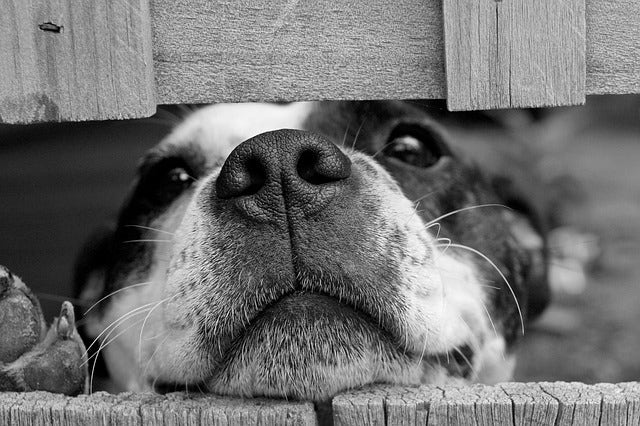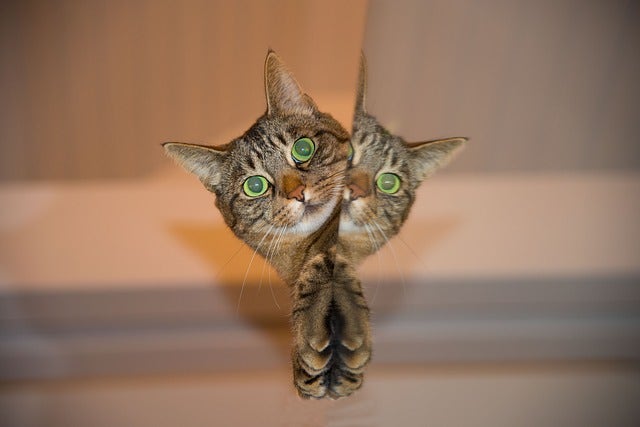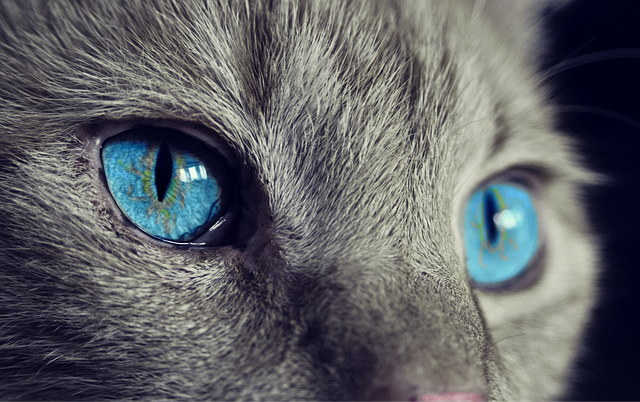
If you’ve ever tried to photograph your wriggling pet, you’ll know it’s not an easy job. Most pets are full of energy, making them nearly impossible to capture when still.
Photographing a cat or dog requires plenty of patience and a good deal of vigilance so you don’t miss that perfect shot. But if you can get it right, you’ll get some photos of your pet’s poses that you’ll want to keep forever. To help you get original shots you will love, here are some more pet photography tips...

Think about Your Pet’s Personality
Every pet is unique, with its own quirks and traits. If you’re trying to photograph your own pet, you’ll know what his or her personality is like. Do you have a dog that always cocks one ear up? Or do you have a cat that sleeps with one paw over its nose? Is your dog into chasing balls? Does your mouse loves running on its wheel?
Capturing the details that make your pet unique is a great way to set your photos apart from other animal pictures.
Keep Your Pet in a Familiar Setting
Dogs and cats can be tetchy creatures, showing anxiety or stress in unfamiliar situations. Naturally, their stressed states don’t make for the most flattering pictures.
The best pet photographs capture your pets at their ease, whether this is at home or at the local dog park. In their natural environment, you’ll spend less time waiting for your pet to adapt before they return to their normal selves for their photo shoot.

You’ll also need to give your pet time to get used to the camera and other accessories. Not even humans like having a camera shoved in their face, so don’t expect it to be any different with your pets!
Let your dog sniff the lens (just keep a cleaning kit nearby!) or your cat brush up against the camera body. They’ll soon get over the novelty of your camera equipment and return to their daily activities.
Consider the Background
Always think about the background when you’re setting up for your shot. After all, you’re going to struggle if you try taking photos of a black cat on black carpet.
You don’t want your backgrounds to add additional, distracting details either. It pays to have a simple background in subtle shades that contrast with your pet’s fur.
Try to Avoid Artificial Light
A camera flash can spook animals. But it can also fudge your photos by causing red eye. This means that natural light is the best option for pet photography.
Outdoor photography is the easiest way to get natural light. But if you have a homebody pet, you can also try getting them into a light-filled room and close to a window.

There are, however, some occasions that might call for a camera flash. If your pet has dark fur, for example, the flash can help accentuate the details in their coat. Flash also helps freeze your pets in action and eliminates unwanted shadows.
If you do use flash, never point it directly at your pet unless you have a diffuser to soften the light. This means it’s better to stay away from your camera’s built-in flash. Meanwhile, direct a speedlight up at the ceiling for a more natural lighting method.
How to Get Their Attention
Your camera will always be competing with other distractions for your pet’s attention. You can hardly restrain your cat or dog for a happy pose. But there are a few things you can do to catch their attention and keep it longer.
There are a few phone apps around, such as the Human-to-Cat Translator or the Dog Squeaky Toy, which will make noises to get your pet’s attention. Other ideas include holding a special treat above your head, or dangling a toy near the camera.
It might help to have an assistant in charge of the distractions so you can put all your attention into the photography.
Pet Photography Poses
This goes hand-in-hand with your pet’s personality. If you have an active cat, your photos will portray her playfulness if you catch her mid-jump. If you have a dog who loves nothing more than to lounge on his favourite cushion, you’ll naturally be inclined to capture him mid-nap.
Whatever pose you choose for your dog, we have a few photography tips to help you get a more captivating shot.
Firstly, try getting eye level with your subject to take your shot. Get in as close as you can – or use a camera with an awesome zoom lens – to create an intimate feel in your pics.
The rule of thirds applies for pet as well as human portraits. If your photo is head-on, try to compose the photo so that the closest eye to your camera sits on the upper or lower quadrant of your picture. However, keep in mind it’s often easier to focus on an active pet if they’re travelling side-to-side rather than coming straight at you.

Camera Settings for Pet Photography
Finally, we’re down to the nitty gritty details: the camera settings. Many professional pet photographers recommend shooting in aperture mode.
Ideally, you would have your aperture priority set to its widest point (that is, the lowest f stop number). This will create a flattering portrait in which your pet’s face will appear sharp and clear while the background is blurred.
You’ll want to anticipate your pet’s frenzied activity by setting your camera to continuous focus mode to increase your shutter speed and keep the focus trained on your pet.
Meanwhile, it’s a good idea to put your camera into burst mode so it will take a series a photographs in quick succession. You can either choose your sharpest shot from the selection, or you can create a photograph series that looks great in a frame.
One final word on point-and-shoot cameras: You will experience shutter lag with a simple compact camera. Make sure you have it set to sports mode when snapping active pets.
If you're looking for some solid camera equipment to take that perfect pet photograph, be sure to check out our huge range of products online or visit us in store today.
